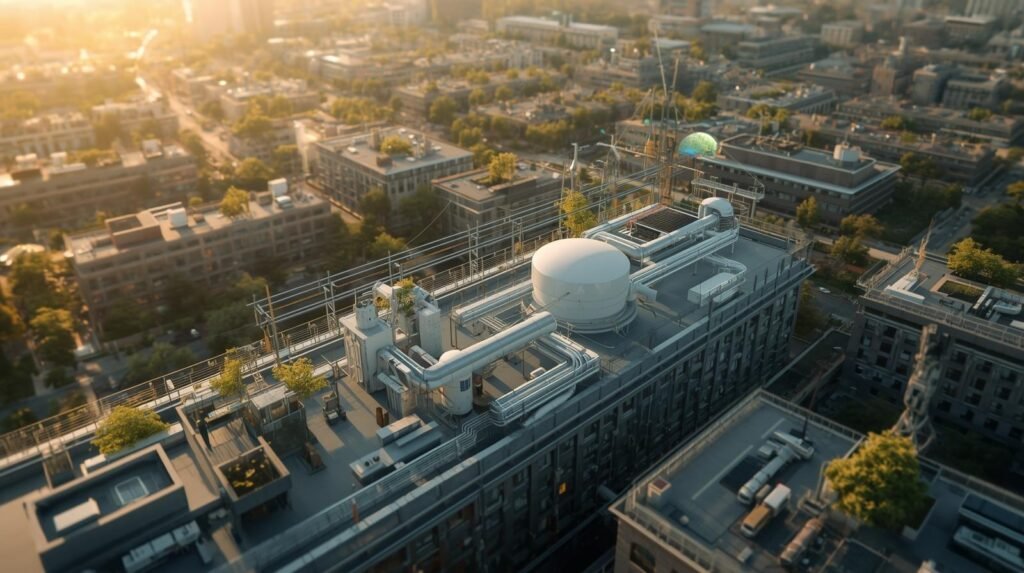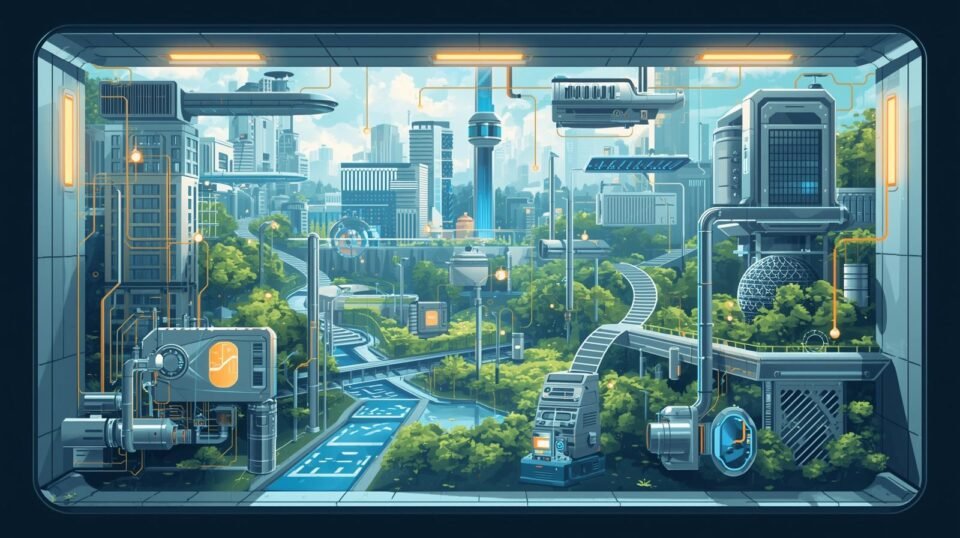Understanding the Environmental Challenges
In the 21st century, human activity has created unprecedented environmental challenges. Rapid industrialization, urbanization, and energy consumption have led to increased carbon emissions, water contamination, and resource depletion. Climate change, air pollution, and ecological degradation are no longer distant problems—they affect daily life, health, and global economies.
Environmental awareness is growing, but traditional methods of managing resources and pollution are no longer sufficient. Governments, businesses, and individuals are now looking for technological solutions that can actively monitor, control, and reduce environmental impact. This is where Environmental Control Technology (ECT) plays a critical role.
What is Environmental Control Technology?
Environmental Control Technology encompasses tools, systems, and processes designed to monitor, manage, and mitigate human impact on the environment. It spans multiple sectors, including:
- Industrial pollution control: Air filters, wastewater treatment, emission reduction systems.
- Energy management: Smart meters, automated energy systems, renewable energy integration.
- Building management: HVAC optimization, indoor air quality monitoring, lighting efficiency.
- Agriculture: Precision irrigation, automated greenhouse climate control, sustainable pest management.
In essence, ECT is about harmonizing human activity with environmental sustainability, ensuring that progress does not come at the cost of ecological health.
Industrial Applications of ECT
Industries contribute significantly to pollution, making them prime candidates for Environmental Control Technology. Applications include:
Air and Water Pollution Management
- Advanced filtration systems remove particulate matter and harmful gases before release.
- Industrial water treatment ensures that wastewater meets environmental standards before being discharged.
- Continuous monitoring sensors detect pollutants in real-time, allowing rapid response.
Energy Optimization

- Upgrading machinery with energy-efficient motors and automation reduces energy consumption.
- Implementing smart energy management systems monitors and adjusts energy use across production lines.
Waste and Resource Management
- Automated sorting and recycling systems reduce landfill waste.
- Material recovery solutions ensure maximum utilization of raw materials, reducing waste and cost.
By integrating these technologies, industries reduce emissions, comply with regulations, save money, and contribute to global sustainability goals.
ECT in Commercial and Residential Buildings
Buildings, whether commercial or residential, can be major energy consumers. ECT helps in:
Smart HVAC and Energy Systems
- Automated heating, ventilation, and air conditioning (HVAC) adjusts based on occupancy and weather conditions.
- Energy monitoring software tracks electricity consumption, helping reduce wastage.
Indoor Air Quality Improvement
- Sensors detect pollutants, humidity, and temperature, automatically adjusting ventilation systems.
- Improved air quality contributes to healthier living and working environments.
Lighting and Appliance Efficiency
- Smart lighting systems dim or switch off when rooms are unoccupied.
- Energy-efficient appliances integrated with smart systems reduce energy bills.
By adopting these technologies, buildings become more sustainable, comfortable, and cost-effective.
Agriculture and Environmental Control Technology
Agriculture is critical for food security but can have significant environmental impacts. ECT helps in:
Precision Agriculture
- Smart irrigation systems optimize water usage, reducing wastage and promoting sustainability.
- Soil moisture sensors guide watering schedules, enhancing crop yield and conserving resources.
Climate-Controlled Greenhouses
- Automated systems manage temperature, humidity, and light to ensure optimal growth.
- Energy-efficient heating and cooling systems reduce operational costs.
Sustainable Pest and Resource Management
- Automated pest control systems minimize chemical use, protecting ecosystems.
- Resource tracking and analysis ensure efficient fertilizer and energy usage.
These measures increase productivity while minimizing the environmental footprint of agriculture.
Global Impact and Regulations
Environmental Control Technology is increasingly shaped by global regulations and sustainability goals:
- Paris Agreement targets reduction of greenhouse gas emissions worldwide.
- ISO 14001 standards guide environmental management systems for industries.
- LEED and BREEAM certifications promote sustainable construction and building operations.
ECT systems help businesses and communities comply with these standards, enhancing credibility and reducing the risk of legal penalties.
Emerging Trends in Environmental Control Technology
The field of ECT is evolving rapidly, driven by innovation:
AI and IoT Integration
- Artificial Intelligence (AI) predicts pollution trends, energy needs, and resource consumption.
- Internet of Things (IoT) devices provide real-time environmental data, enabling automated control and remote management.
Renewable Energy Solutions

- Integration of solar, wind, and battery storage systems with ECT ensures optimized energy usage.
- Smart grids balance supply and demand, reducing reliance on non-renewable energy sources.
Smart Cities and Urban Sustainability
- Cities are adopting automated environmental monitoring systems to manage traffic, air quality, and waste.
- These initiatives create safer, healthier, and more sustainable urban environments.
Benefits of Environmental Control Technolog
Economic Benefits
- Reduced energy and water bills.
- Lower operational costs through efficiency optimization.
- Avoidance of regulatory fines through compliance.
Environmental Benefits
- Reduced emissions and pollution.
- Conservation of water and other natural resources.
- Positive contribution to climate change mitigation.
Social Benefits
- Healthier indoor and outdoor environments.
- Safer workplaces and communities.
- Increased awareness and adoption of sustainable practices.
Implementing ECT – Challenges and Solutions
High Initial Costs
- Solution: Governments and environmental agencies often provide subsidies, grants, and tax incentives to offset initial investment.
Technical Complexity
- Solution: Training programs, user-friendly interfaces, and support services simplify adoption.
Maintenance Requirements
- Solution: Automated monitoring and predictive maintenance reduce human intervention and long-term costs.
Real-World Examples

- Smart Factories in Germany – Use AI-driven ECT to monitor emissions, optimize machinery, and reduce energy use by 30%.
- LEED-certified buildings in the USA – Employ smart HVAC, lighting, and water systems, resulting in sustainable operations and reduced utility costs.
- Precision farming in the Netherlands – IoT sensors manage irrigation and nutrient application, boosting yields while conserving resources.
These examples show that ECT is practical, scalable, and effective across sectors.
FAQs About Environmental Control Technology
1. What is Environmental Control Technology (ECT)?
ECT is a collection of systems and technologies that monitor, manage, and reduce environmental impact in industries, buildings, and agriculture.
2. How does ECT benefit industries?
By reducing emissions, optimizing energy use, improving resource management, and ensuring regulatory compliance.
3. Can households benefit from ECT?
Yes, through smart HVAC, energy management systems, and indoor air quality monitoring, households can save energy and live healthier.
4. What are emerging trends in ECT?
AI, IoT integration, renewable energy systems, and smart city initiatives are driving the future of ECT.
5. Is ECT cost-effective?
While initial setup may require investment, long-term savings on energy, water, and resource usage make it highly cost-effective.
Conclusion
Environmental Control Technology is no longer optional; it is essential for sustainable development. By implementing ECT, industries, households, and agriculture can reduce environmental impact, optimize resources, comply with regulations, and save costs.
As innovation continues, ECT will play a critical role in building a sustainable, eco-friendly, and efficient future. Adopting these technologies today ensures that tomorrow’s environmental challenges are met with effective, intelligent, and responsible solutions.


